
Survey says: Your favorites from decades past
Last year we sent out a survey asking you to share experiences from your time at Nebraska—words of wisdom to be shared with prospective and current undergraduate students. One of the questions asked about your favorite course or faculty member at Nebraska. We thought it would be fun to feature what a few of you said, selected across a span of time. And, thank you to all who participated in the survey!
“Paul Meadows - who made Sociology an immediate and living experience.”
Audrey Rosenbaum Swartz, 1951
Sociology, Economics
“Robert Knoll-freshman honors English and other courses subsequently—smart, funny, challenging—pushed honors students to become university faculty members.”
Robert Cherny, 1965
History
“Dr. Eugene Martin, microbiology. Dr. Martin always made time, was patient, understanding and encouraging. Even after I left he kept in touch and continued to offer assistance and advice. His involvement and personal qualities have motivated me to show the same qualities to those I now mentor.”
Alan Taege, MD, 1975
Microbiology
“Dr. Bill Seiler. He gave me the insight to understand the value of my degree and what was/is possible with a strong liberal arts degree.”
Graduate, 1983
Communication Studies
“Peter Bleed. He taught my archeological field school, which led to my first job in archeology.”
Graduate, 1990
Anthropology, French
“Dieter Karch in seeing some of the humor (and discipline) in the syntax and grammar of German. Jim Lewis in freshman honors calculus -- making me see that mathematics describes the world around us. Tim Gay in physics, and so many more.”
John Kastning, 2000
German, Chemical Engineering (College of Engineering)
“John Gruhl in political science-- he pushed us the hardest, but I learned the most. He genuinely cared about his students and their education.”
Jordan Reid, 2014
English, Political Science
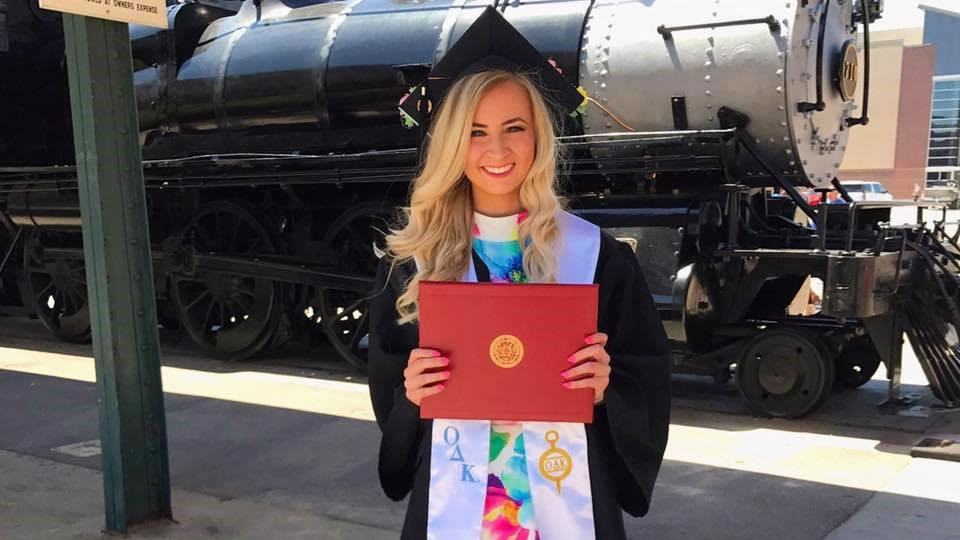
Meet Taylor Brown
For College of Arts and Sciences alumna Taylor Brown, the path toward personal and professional achievement has not always been easy.
“I come from a single-parent household, and I haven’t seen or had contact with my father since I was two years old,” Brown explains. “Growing up in a single-parent household had its joys and sorrows, as other families do; however, ours was filled with marked financial struggle.”
A native of Omaha, Brown was a promising student attending Millard North High School and enrolled in its International Baccalaureate Diploma Program. When her fellow students were starting to discuss plans for college, it was then that she came to the realization that there was a significant difference in household income between her peers and herself.
“Going to college was a dream of sorts after my mom told me she couldn’t help me, and that I probably wouldn’t be able to go unless I got really lucky,” Brown recalls. “I took the ACT anyway – just in case.”
With hard work and perseverance, Brown earned the Susan Thompson Buffet Scholarship, enabling her to achieve her dream of a college education. In addition to earning a BA both in English and Spanish from Nebraska in May of 2017, Brown took full advantage of many opportunities to grow as a student and a leader at Nebraska.
“During my time in college, I engaged in the kind of deep self-exploration and self-discovery that I can’t compare to anything else,” Brown reflects. “It was in my English courses that I really analyzed who I was, who we are as people: how we love, how we hate, how we relate, how we connect or disconnect, and how we live. I learned to ask myself what that means in the context of my own life, and how to analyze myself as both separate and part of the world.”
This time of self-discovery propelled Brown into accomplishing a great deal beyond the classroom. She was a proud member of Alpha Omicron Pi sorority as well as Omicron Delta Kappa Honors Society.
“I loved every minute of it, Brown says. “Getting to know people in my own honors society, and others from Mortar Board and Innocents, was a real treat. Toward the end of my time at Nebraska, I also had the privilege of meeting Hank Bounds, our representative for the society.”
Brown also served as Vice President of Programming and Member Development for the Panhellenic Council where she helped lead programs on alcohol abuse awareness and participated in educating the campus community on hazing. “This role taught me a great deal about how to govern, delegate appropriately, how to listen to my constituents' concerns respectfully, parliamentary procedure, and much more,” Brown notes.
While at Nebraska, Brown also took part in the William H. Thompson Learning Community, an opportunity she credits as having taught her many life and academic skills, including assistance with finding scholarships to fully fund her study abroad trip to Spain. “I became a stronger advocate for others in my community because the William H. Thompson community helped me interact with people from all walks of life, to be conscientious of that, and to listen to others' stories,” Brown reflects.
Prior to graduating, Brown enrolled in a Professional Practices class taught by Dr. Kelly Payne, whom Brown credits as a having played a significant role mentoring her and preparing her for seeking full time employment as an English major. “At first I was hesitant to take a class that combined both analysis of literature and preparation for a full-time job,” she recalls. “I wondered: Did I really need to prepare for a full-time job that badly?” As it turns out, Payne’s class opened Brown’s eyes to a world of possibilities where she could use her skills to pursue a successful and fulfilling career in her discipline.
“One of the most foundational activities we did in class was create our own blog/online portfolio,” Brown explains. “It was a space where we could put our own creative and analytical talents into one cohesive spot for future employers to see. At first, some of us in the class were skeptical of the activity and if it would really help us. However, this is one of the best things I have ever done in terms of finding a job.”
Brown says that Payne also held panels every week with former English majors who were now professionals in the community. Following these panels, students like Brown often would network with these presenters to discuss the value of their skills to future employers. “This was encouraging because it allowed me to look at why I was an English major in new ways, and also how to be confident in my skills and articulate that to prospective employers,” Brown reflects.
Today, Brown is enjoying her first year as a grant report writer for Lutheran Family Services in Omaha. “To this day, I am not sure that I would be where I am without the clarity the Professional Practices course, along with Kelly Payne’s indelible encouragement.” She adds, “I am really happy and proud to say that I didn’t settle, and kept looking for a job that I knew I wanted and would love.”
As she looks back on her journey from a high schooler worried about a college education being out of her reach to where she is today, Brown shares her thoughts with current students who may be following in her footsteps.
“Do not listen to naysayers or anyone who doesn’t support you,” Brown offers. “It’s easy to get down on yourself if you let the words of a few determine your actions. Instead, wake up every day with a quiet resilience knowing that you’re doing what is right and what is best for you. Continue to chase that dream and do not let anything or anyone get in the way—including your own self.”
4-in-1 flu shot may mean lifelong protection against the flu
A vaccine combining centralized ancestral genes from four major influenza strains appears to provide broad protection against the dangerous ailment, according to new research by a team from the Nebraska Center for Virology.
Mice protected by the unconventional vaccine survived exposure to lethal doses of seven of nine widely divergent influenza viruses. Those that received higher doses of the vaccine didn't even get sick.
In contrast, mice that received traditional flu shots or nasal sprays all sickened and died when exposed to the same viruses. The deadly pathogens were able to evade the immune responses triggered by the traditional vaccines.
While it is too soon to say the approach could be successfully used in humans, it appears to be a promising avenue toward a universal flu shot, according to lead researcher Eric Weaver, an assistant professor in the School of Biological Sciences at the University of Nebraska-Lincoln.
Weaver said the study is the first to report on whether a universal flu shot could be created by using a combination of multiple genes shared at the ancestral level by flu strains circulating today.
"The ultimate goal is to be able to vaccinate once and provide lifelong protection," Weaver said.
The Centers for Disease Control and Prevention estimates that 40 million Americans contracted influenza during the 2015-16 flu season and 970,000 people were hospitalized for the ailment. The agency estimated that vaccinations prevented about 1.9 million illnesses and 67,000 hospitalizations.
"To put this in other terms, our current influenza vaccine programs and technologies reduce influenza infections and hospitalizations by 4.75 percent and 6.9 percent, respectively," Weaver said. "There is no doubt that there is a need for more effective vaccine technologies."
Yet because the influenza virus mutates rapidly and because people, animals and birds often carry the virus without displaying symptoms, it's been difficult to develop a vaccine with long-term effectiveness. The conventional influenza vaccine platform uses weakened or dead versions of the influenza virus to stimulate immunity against hemagglutinin (HA), a spike-shaped protein that extends from the surface of the virus and attacks cells.
According to a 2013 Clinical Microbiology Reviews article, the challenges of the conventional approach include predicting which flu strain will circulate in coming years; manufacturing and delivering safe, timely and adequate supplies; and poor responsiveness among the elderly, who often are the most vulnerable to influenza infection.
Conventional vaccines have been shown to be less than 60 percent effective when they're successfully matched to the currently circulating strain. They're far less effective when mismatched.
"An ideal influenza vaccine would be inexpensive, provide long-lasting immunity, require few immunizations and would work against all variants of the virus," Weaver said.
Some experts say it could take until 2020 or 2025 before a universal flu vaccine is available.
Pursuit of a universal influenza vaccine has been difficult. Scientists are trying various approaches to better match vaccines to multiple viral strains. Other strategies include developing vaccines aimed at the virus's protein coat, other proteins that have been found to be identical in multiple flu strains, or the stalk of the hemagglutinin protein rather than its head.
These approaches have shown promising results. However, Weaver said his study is the first to report the use of multiple centralized HA genes, identified using protein sequence analysis programs, to provide the greatest level of cross-protective immunity possible.
In the article published Nov. 2 in Scientific Reports, Weaver and his colleagues Amy Lingel and Brianna L. Bullard detail an approach they say is "scalable and translatable to humans and may provide the foundation for complete and long-lasting anti-influenza immunity."
The idea arose from past research led by Dr. Bette Korber at Los Alamos National Laboratories to discover the ancestral genes for the Human Immunodeficiency Virus and to pinpoint when that virus jumped from monkeys to man. Weaver was involved with that effort while a post-doctoral researcher at Duke University School of Medicine. He and his colleagues decided to try a similar concept with the influenza virus, synthesizing genes that are central to influenza's phylogenetic tree.
Instead of using weakened or deadened flu virus, his experiments at the Nebraska Center for Virology have used replication-defective Adenoviruses – which cause the common cold – that have been altered to carry what he calls consensus genes for H1, H2, H3 and H5 influenza strains. The vaccine is no longer capable of causing cold symptoms, but is still able to safely deliver the influenza vaccine genes.
"Our idea is that these centralized antigens can set up a foundation of immunity against influenza," he said. "Because they are centralized and represent all the strains equally, they could provide a basis for immunity against all evolved strains."
Weaver's research is funded by a National Institutes of Health grant.
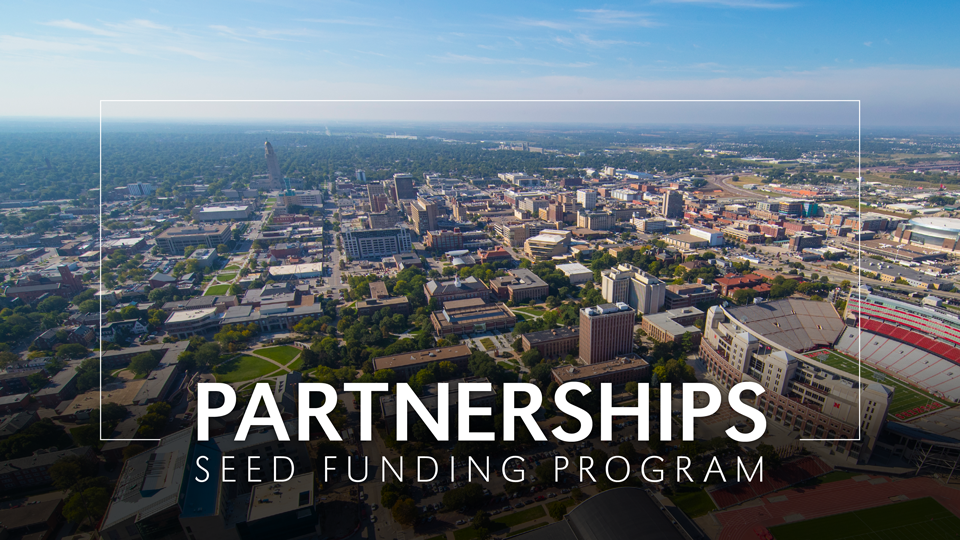
New CAS partnership awards fund projects with global impact
Deborah Brown, Jeffrey Stevens, and Stacey Waite are the first recipients of a new partnership seed funding program in the College of Arts and Sciences at the University of Nebraska-Lincoln. The program encourages the formation of mutually beneficial collaborations between faculty and organizations outside the university in order to fuel innovation, address societal issues, and contribute to the public good.
“I was delighted and pleasantly surprised by the number of applications we received for this brand new award,” Matthew L. Jockers, Associate Dean for Research and Partnerships for the college and Susan J. Rosowski Associate Professor of English, said. “We knew that there were faculty in the college who were excited by the idea of forming external partnerships, but I was really delighted when I saw so many strong applications coming in from all areas of the college: from the humanities, the social sciences, and the sciences.”
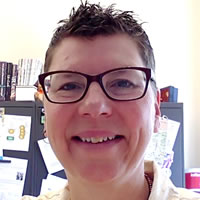
Brown, an associate professor in the School of Biological Sciences, is partnering with Adjuvance Technologies, an organization dedicated to empowering health through breakthroughs in the design and manufacturing of vaccine adjuvants—chemicals that modify the effect of other chemicals. The Brown Lab recently completed work with Adjuvance Technologies in pre-clinical studies of influenza vaccine efficacy in mice, and the award will allow continued pre-clinical testing and research.
“Our vaccine platform will provide higher levels of immune memory, with lower amounts of vaccine and adjuvant, thus limiting the cost of each vaccine dose as well as toxicity and adverse side effects,” Brown said. “Adjuvant will benefit from their product being tested in pre-clinical models for influenza, and our laboratory will benefit from the addition of their product to our platform.”
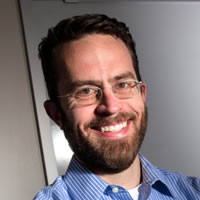
Stevens, an associate professor in the Department of Psychology, is partnering with Prairie Skies, Inc. Stevens is establishing a new research program on canine cognition and dog-human interaction. Working with the organization’s trainer, Dr. Jill Morstad, will help him develop a series of assessments to assist with dog and owner team trainings—important for the military and service dog trainers, as well as the general public.
“There is no perfect test for canine temperament,” Stevens said. “Diagnostics that can quickly and easily assess dog and owner characteristics to predict the likelihood of training success or identify personalized training techniques would prove valuable to dog trainers and owners. Dr. Morstad can screen dogs at the beginning of testing and develop alternative training techniques.”
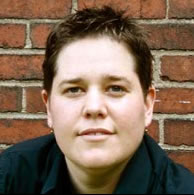
Waite, an associate professor in the Department of English, is partnering with Nebraska Writers Collective. Waite will launch a new data-focused research project to study the impact of the community literacy programs for its long-term significance for students and teachers.
“My previous research focuses primarily on college classrooms, and this research collaboration with the NWC allows me to continue to develop the connections between university classrooms and other powerful sites for writing in local communities,” Waite said. “This funding also gives me access to data I could not otherwise gather on my own.”
“The three projects selected for this inaugural award cycle show great promise for effecting positive change, and we could not be happier about the intellectual diversity represented in their projects,” said Dean Joseph S. Francisco. “The recipients represent the breadth of the college and the partners they have identified are equally varied; including an industry startup, a small business, and a local non-profit.”
According to the program’s web page, the program fits firmly within the college’s commitment to teaching, research, and service. The college believes that a vibrant faculty engages in a wide portfolio of partnership activities not just those that promote economic growth and financial advantages but also those that promote the public good.
“This award encourages faculty to move their work and their thinking beyond the lab bench and beyond the academic journals, and to build bridges out into the community by partnering with companies and non-profits,” Jockers said.
Contents
- Survey Says: Your favorites from decades past
- Alumni spotlight: Taylor Brown
- 4-in-1 flu shot may mean lifelong protection against the flu
- New CAS partnership awards fund projects with global impact